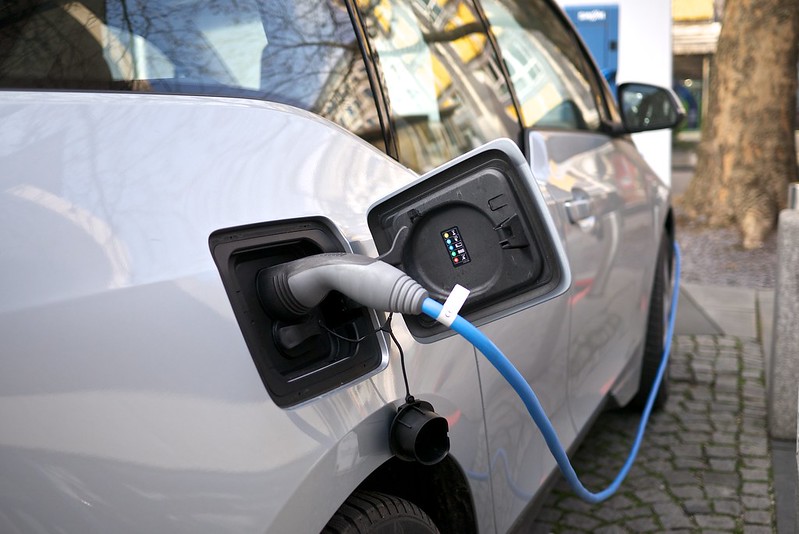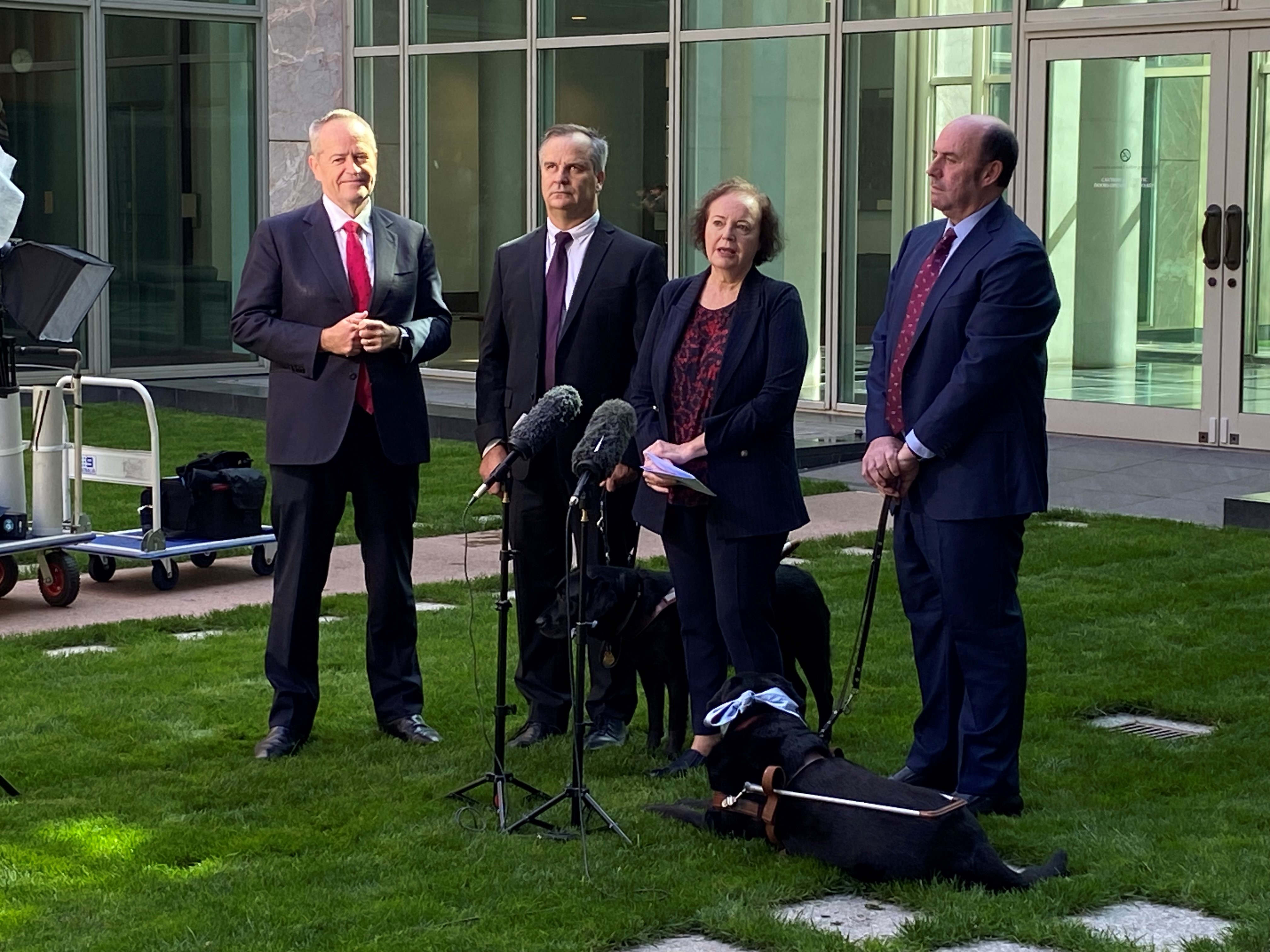Vision Australia’s campaign to mandate the use of Acoustic Vehicle Alerting Systems in electric vehicles has today been elevated to a national discussion with the signing of a draft Regulation Impact Statement calling for public consultation and feedback.
On behalf of the blind and low vision community, Vision Australia has led advocacy efforts since 2018 to improve pedestrian safety by urging decision-makers to nationally introduce the use of external noise-emitting devices for electric vehicles at low speed.
Electric vehicles can pose a particular risk for blind and low vision pedestrians, who rely on sound such as vehicular noise to navigate roads independently and safely.
Pedestrians who are blind or have low vision have reported feeling vulnerable near electric vehicles, with more than one in three participants in a Vision Australia and Monash University Accident Research Centre report saying they’d had a collision or near-collision with one.

Caption: Vision Australia has long called for Acoustic Vehicle Alerting Systems to be mandatory in electric cars in Australia. Kārlis Dambrāns/Flickr.
The draft Regulation Impact Statement examines whether the Federal Government should adopt Acoustic Vehicle Alerting Systems as a new Australian Design Rule.
Australian Design Rules are mandatory national vehicle standards under the Road Vehicle Standards Act 2018 that align with international vehicle regulations.
Most major vehicle markets, including the EU, UK, Japan, Korea, China and the US, have mandated the fitting of Acoustic Vehicle Alerting Systems to electric vehicles.
“Vision Australia is grateful that the incumbent Federal Government has listened to our recommendation and is acting in the interest of all road users,” said Chris Edwards, Vision Australia’s manager of government relations and advocacy, the NDIS and aged care.
“We’re pleased significant steps have been taken to address what is a serious safety issue for all pedestrians, not just those who are blind or have low vision and who rely on other sensory faculties, such as hearing and touch, for independence and safety.
“With electric vehicles predicted to make up 90 per cent of Australia’s vehicle fleet by 2050, this outcome is significant for everyone, especially as we understand that pedestrian road crashes cost the Australian community over $1.2 billion each year. But – the personal cost is immeasurable.”

Caption: Minister for the National Disability Insurance Scheme and Minister for Government Services, Bill Shorten, Vision Australia manager of government relation Chris Edwards and Seeing Eye Dog Eva, Assistant Minister for Infrastructure and Transport Senator Carol Brown and John Barlow and dog guide Jazzy at the regulatory impact statement announcement.
Before considering this major policy change, the Federal Government wants to hear from people and businesses in the community. Views can be shared via the email [email protected] to be included in Vision Australia’s submission.










